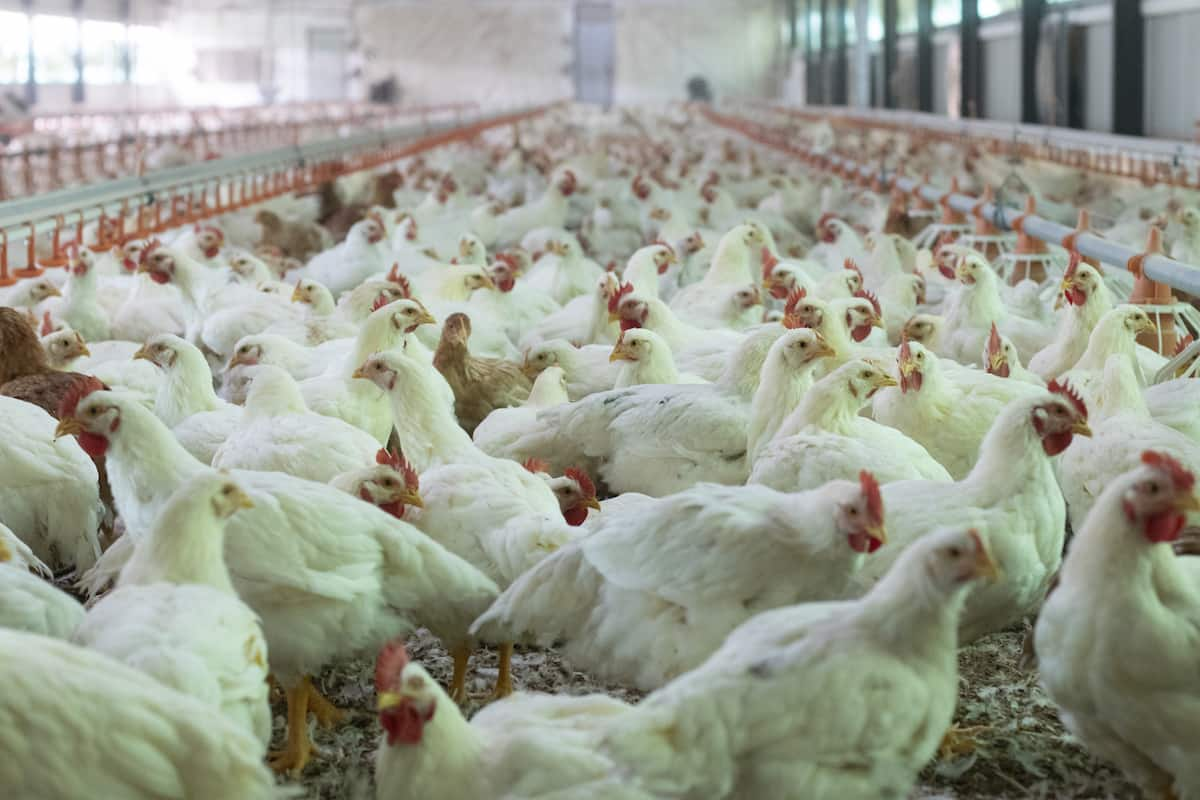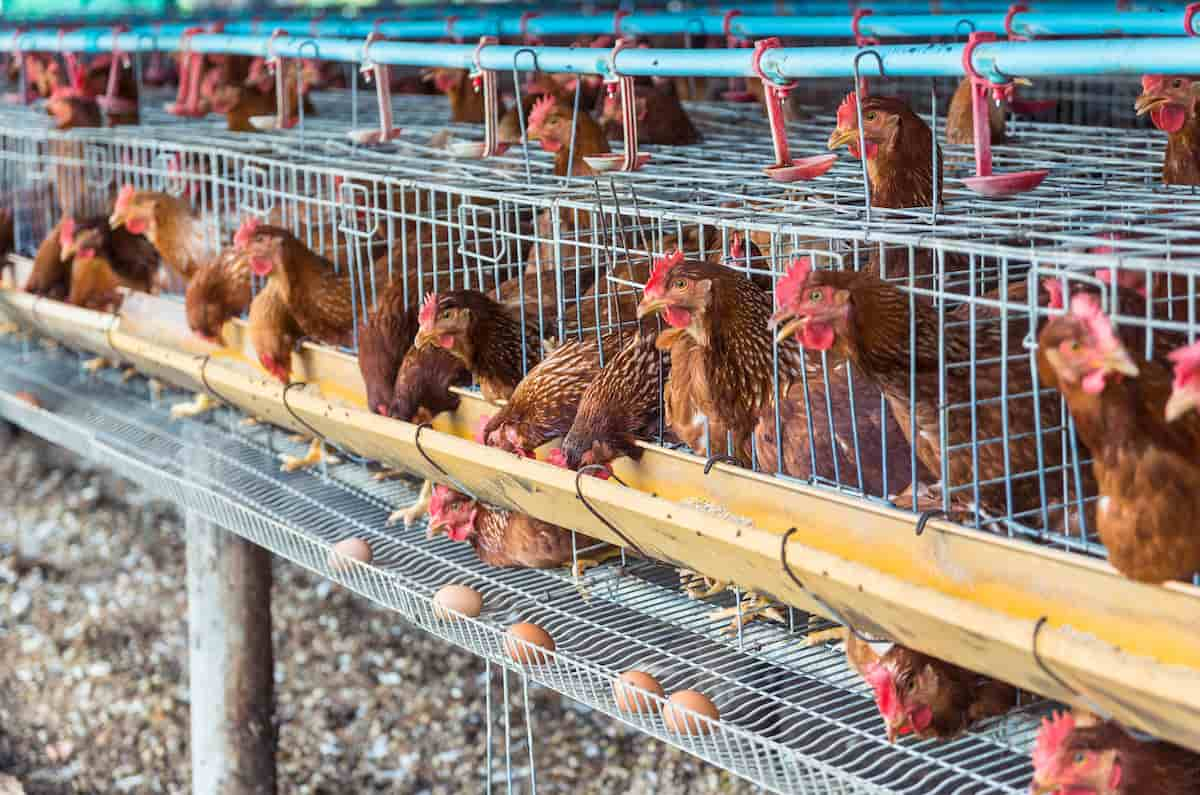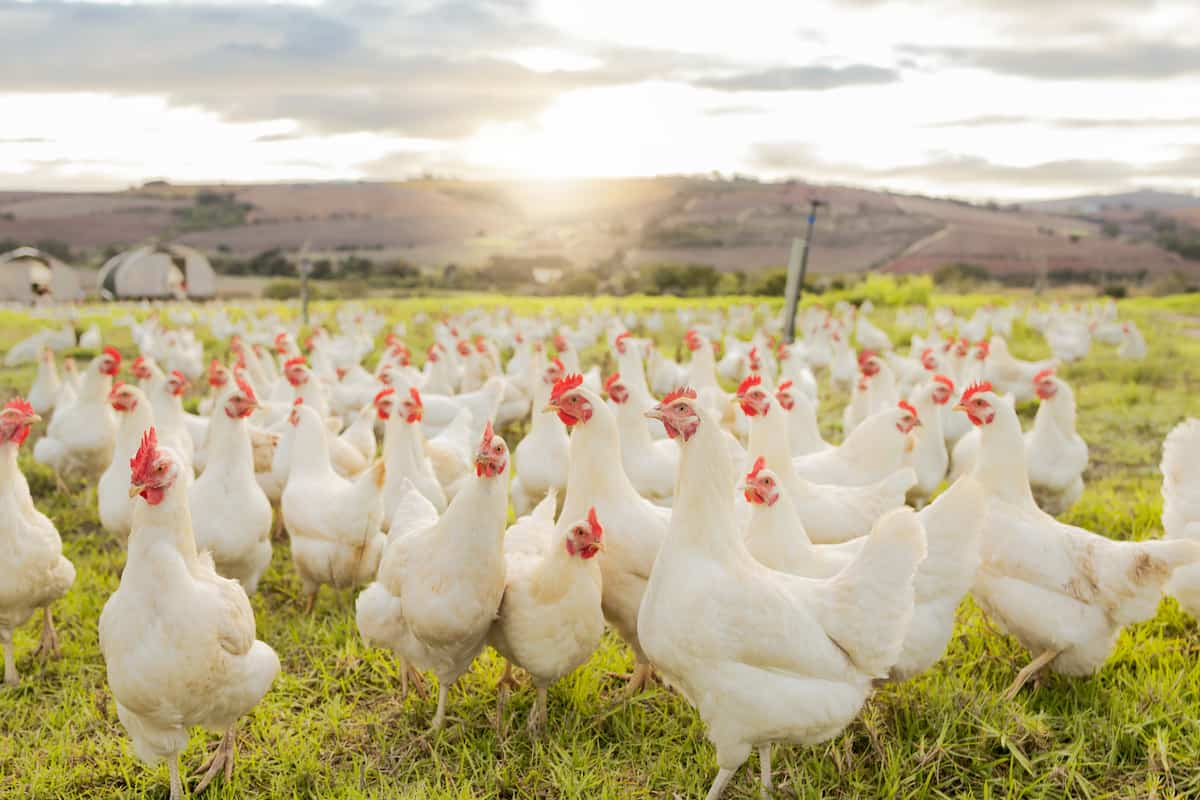Poultry farming is an agricultural practice involving raising birds for commercial purposes, such as egg and meat production. These birds include chickens, ducks, geese, turkeys, and other species. Poultry farming is profitable, as the demand for poultry products is increasing due to the growing human population and urbanization. Below we learn types of poultry farming and some frequently asked questions about poultry farming.
Types of Poultry Farming
Commercial Broiler Farming
Commercial broiler farming is the most common type of poultry farming, focusing on broiler chicken production. Broiler chickens are bred for their meat and are usually ready for harvest at around 6-8 weeks of age. This type of poultry farming is highly profitable, as broiler chickens have a high growth rate and are relatively cheap to raise.
Commercial broiler farming involves selecting high-quality broiler chicks, providing proper housing, feeding, and water, and providing veterinary care when necessary. Broiler chickens are typically raised in large, temperature-controlled barns or sheds and are fed a specially formulated diet rich in protein and other essential nutrients. The environment where broiler chickens are raised is critical to their growth and health, and farmers must maintain strict hygiene and sanitation protocols to prevent disease outbreaks.

Layer Poultry Farming
Layer poultry farming is another popular type of poultry farming focusing on producing eggs. Layers are female chickens specifically bred for their egg-laying abilities, and they typically start laying eggs at around 5-6 months of age. This type of poultry farming is highly profitable, as there is a high demand for eggs in many countries worldwide.
Steps involved in layer poultry farming include selecting high-quality layer chicks, providing proper housing, feeding, and water, and providing veterinary care when necessary. Layer chickens are typically housed in large, temperature-controlled barns or sheds and are fed a specially formulated diet rich in calcium, protein, and other essential nutrients. The environment in which layer chickens are raised is critical to their health and egg production, and farmers must maintain strict hygiene and sanitation protocols to prevent disease outbreaks.
In case you missed it: Broiler Chicken Farming Business Plan: Things to Consider While Starting a Poultry Farm

Free Range Poultry Farming
Free-range poultry farming is a type of poultry farming that allows chickens to roam freely outside of their coops. This type of farming is becoming increasingly popular as consumers look for more natural and humane ways of raising poultry. In addition, free-range chickens can forage for food and are not confined to small, crowded cages or sheds.
Free-range poultry farming involves selecting high-quality chicks, providing proper housing, feeding, and water, and providing veterinary care when necessary. Free-range chickens are typically housed in large coops surrounded by large, fenced-in areas that allow them to roam freely. They are also typically fed a diet that includes natural grains, greens, and insects.
Organic Poultry Farming
Organic poultry farming is a method of raising chickens naturally and sustainably to produce high-quality eggs and meat. Organic poultry farmers use only natural and organic feed and avoid synthetic pesticides, herbicides, and fertilizers. This type of farming is based on the principles of organic agriculture, which emphasizes using natural methods to produce food and protecting the environment. Organic chickens are typically housed in large coops surrounded by large, fenced-in areas that allow them to roam freely.
They are also typically fed a diet that includes natural grains, greens, and insects. This diet ensures that the chickens are healthy and strong, and it also results in eggs and meat that are high in nutrients and free from harmful chemicals. Organic poultry farmers must also obtain certification from an accredited certification body to sell their organic products. This certification process involves regular inspections and audits to ensure that farmers follow organic principles and practices.
In case you missed it: Beginner’s Guide to Poultry Farming: The Essential Requirements You Need To Know

Frequently Asked Questions About Types of Poultry Farming?
Which Type of Poultry Farming Is Most Profitable?
The most profitable type of poultry farming depends on various factors such as market demand, production costs, and production scale. Among the different types of poultry farming, commercial broiler farming is considered one of the most profitable. This is because broiler chickens have a high growth rate and are relatively cheap to raise, and there is a high demand for poultry meat globally.
Additionally, broiler chickens reach maturity quickly, and farmers can sell them for meat within 6-8 weeks of age, which means they can have multiple harvests in a year. Another type of poultry farming that is also considered highly profitable is layer poultry farming. There is a constant demand for eggs, and egg production is relatively cheap compared to other types of poultry farming.
Layer chickens typically lay eggs for several years, and farmers can sell the eggs for a profit throughout this time. Additionally, layer chickens are less susceptible to disease than broiler chickens, requiring less intensive care and maintenance, which helps keep production costs low. Overall, layer poultry farming is a profitable and sustainable business that has the potential to generate significant returns for farmers.
How Many Times Can a Hen Give Birth in A Year?
A hen can lay eggs multiple times a year and an average of 250-300 eggs in a year. Hens are considered highly productive egg-laying birds and can lay one egg daily on average. Several variables, including the hen’s breed, age, nutrition, and living circumstances, affect its ability to lay eggs and the number of eggs it lays. For example, heritage breeds tend to lay fewer eggs than commercial breeds, specifically bred for their high egg-laying capacity.
However, it is important to note that a hen cannot give birth as it cannot carry or incubate eggs internally. Hens lay eggs that a rooster fertilizes, but the eggs must be incubated artificially to hatch into chicks. The egg-laying capacity of a hen will decline as it ages, and after a few years, it will eventually stop laying eggs altogether. Farmers often replace older hens with new birds to maintain a steady supply of eggs. Farmers can encourage hens to lay eggs steadily throughout the year by providing adequate nutrition and living conditions.
Conclusion
In conclusion, poultry farming is a lucrative business involving raising domesticated birds for eggs, meat, and feathers. Each of these types of poultry farming has its advantages and disadvantages. Still, the key to success in this industry is to understand the specific needs of the birds and to provide a clean, safe, and healthy environment for them.
- Feed Your Flock for Less: Top 10 Tips to Save on Chicken Feed
- Ultimate Guide to Ossabaw Island Hog: Breeding, Raising, Diet, and Care
- Hatching Answers: The Top 10 Reasons Your Chickens Aren’t Laying Eggs
- Eggs and Economics: Breaking Down the Cost of Raising Backyard Chickens
- Defend Your Greens: Proven Methods to Keep Iguanas Out of Your Garden
- Ultimate Guide to Cinnamon Queen Chicken: A Comprehensive Guide for Beginners
- Ultimate Guide to California Tan Chicken: Breeding, Raising, Diet, Egg-Production and Care
- Ultimate Guide to Marsh Daisy Chicken: Breeding, Raising, Diet, and Care
- 10 Types of Chicken Farming Businesses You Can Start for Profits